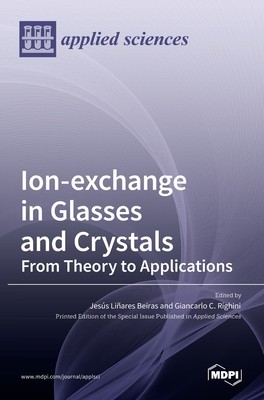
- We will send in 10–14 business days.
- Publisher: MDPI AG
- ISBN-10: 3036519017
- ISBN-13: 9783036519012
- Format: 17 x 24.4 x 1.4 cm, hardcover
- Language: English
- SAVE -10% with code: EXTRA
Ion-exchange in Glasses and Crystals (e-book) (used book) | bookbook.eu
Reviews
Description
Since its first observation in 1850, ion-exchange (IEx) has become a fundamental process in many applications involving water treatment, catalysis, chromatography, and the food and pharmaceutical industries. Starting from the early 1900s, another relevant application of IEx has been in the glass industry, with the surface tempering of glass produced by a K+-Na+ ion exchange. Nowadays, photonics has greatly exploited IEx technology: graded-index microlenses, graded-index fibers and integrated optical waveguides and devices are examples of achievements made possible by the IEx process. Moreover, ion-exchange is possible in ferroelectric crystals, too, and has been fundamental for the development of many linear and nonlinear integrated optical devices in lithium niobate and tantalate.
EXTRA 10 % discount with code: EXTRA
The promotion ends in 17d.09:59:09
The discount code is valid when purchasing from 10 €. Discounts do not stack.
- Publisher: MDPI AG
- ISBN-10: 3036519017
- ISBN-13: 9783036519012
- Format: 17 x 24.4 x 1.4 cm, hardcover
- Language: English English
Since its first observation in 1850, ion-exchange (IEx) has become a fundamental process in many applications involving water treatment, catalysis, chromatography, and the food and pharmaceutical industries. Starting from the early 1900s, another relevant application of IEx has been in the glass industry, with the surface tempering of glass produced by a K+-Na+ ion exchange. Nowadays, photonics has greatly exploited IEx technology: graded-index microlenses, graded-index fibers and integrated optical waveguides and devices are examples of achievements made possible by the IEx process. Moreover, ion-exchange is possible in ferroelectric crystals, too, and has been fundamental for the development of many linear and nonlinear integrated optical devices in lithium niobate and tantalate.


Reviews